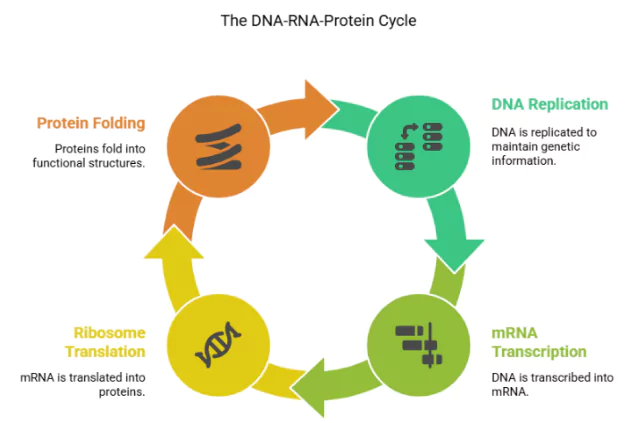Recently, a Chinese study reveals that A-to-I mRNA editing is developmentally regulated in fungi, yet its evolutionary purpose remains unclear.
Modification of mRNA Post-Transcription
- mRNA editing : It is a process where messenger RNA (mRNA) is altered after being transcribed from DNA but before being translated into proteins.
- A-to-I mRNA Editing Mechanism: Adenosine (A) is enzymatically converted to Inosine (I) by ADAR proteins (Adenosine Deaminases Acting on RNA).
- Ribosomes then interpret inosine as guanine (G), altering the resulting protein.
- Purpose of mRNA Editing: This editing allows a single gene to code for multiple protein variants, contributing to biological flexibility without altering the underlying DNA sequence.
- Complications Involved
- mRNA editing can override natural stop codons (e.g., UAG becomes UGG), leading to proteins that are longer than intended.
- This raises potential risks, especially if such extensions lead to malfunctioning proteins.
- Scientists question the evolutionary advantage of such complexity, as simpler DNA changes could achieve the same outcome.
Natural Mechanism for Protein Diversity
- Adaptive Use in Fungi: Research on Fusarium graminearum shows that A-to-I editing is stage-specific:
- No editing during vegetative growth, when genes with premature stop codons remain inactive.
- High editing activity during sexual stage, activating over 26,000 mRNA sites.
- Role of PSC Genes: The study identified 71 PSC (Premature Stop Codon) genes, which are activated via A-to-I editing only during the sexual stage.
- Deletion of PSC genes affects fungal sexual development, proving their stage-specific importance.
- Two of these genes, PSC64 and PSC69, remain unedited during asexual growth, helping resist environmental stress.
- Evolutionary Insight: If these stop codons were permanently replaced in DNA, the fungus would lose its adaptive flexibility
- Editing allows F. graminearum to switch gene functions depending on its lifecycle stage.
About mRNA Technology

- DNA-RNA-Protein Paradigm: DNA is like a cookbook; mRNA carries individual recipes to the ribosomes, which then assemble proteins using amino acids.
- ADAR-Mediated Editing: Instead of modifying the DNA blueprint, organisms use ADAR proteins to selectively modify RNA, producing custom proteins based on situational needs.
- Current Mystery: Despite its prevalence, the biological rationale behind widespread A-to-I editing remains elusive. Only a handful of the thousands of edited sites are clearly beneficial.
Application in RNA Vaccines and Gene Therapy
- RNA Vaccines: mRNA technology, as seen in COVID-19 vaccines, uses synthetic mRNA to instruct cells to make proteins that trigger immune responses.
- Gene Therapy Applications: In somatic gene therapy, modified mRNAs can correct faulty proteins without altering DNA.
- Future therapies may leverage controlled RNA editing for targeted protein regulation.
Conclusion
While mRNA editing allows complex, flexible gene expression, its full evolutionary role remains unclear. Still, its potential in biotechnology and medicine continues to expand rapidly.
![]() 19 May 2025
19 May 2025


